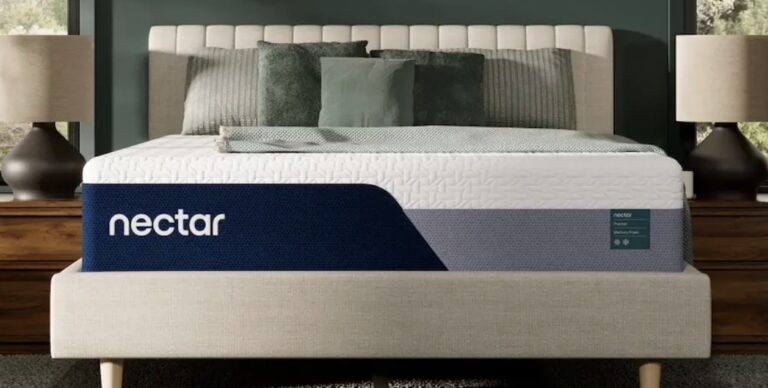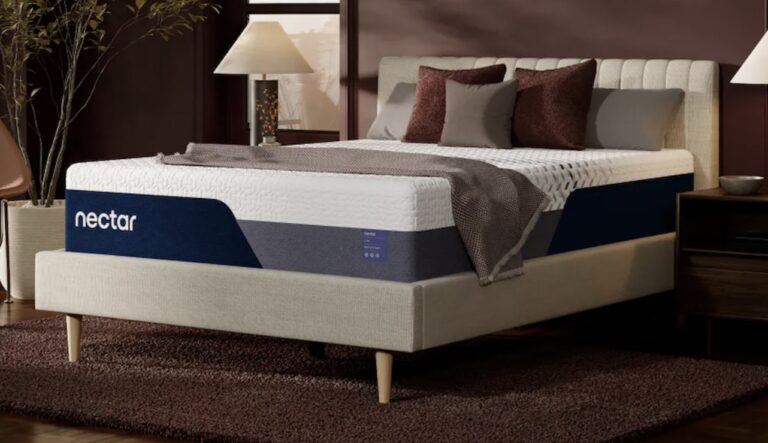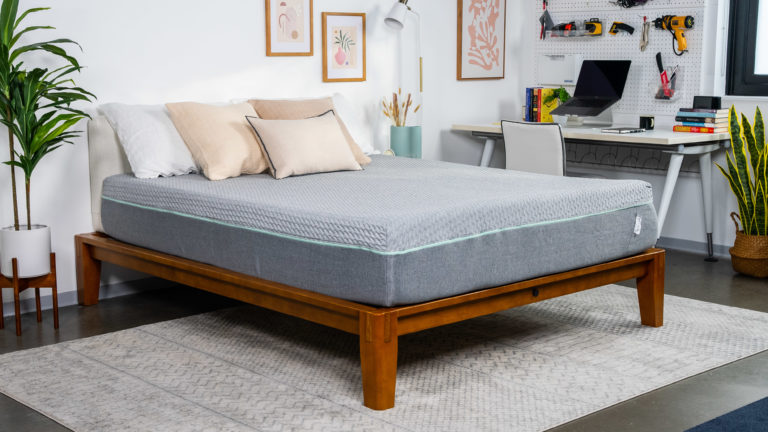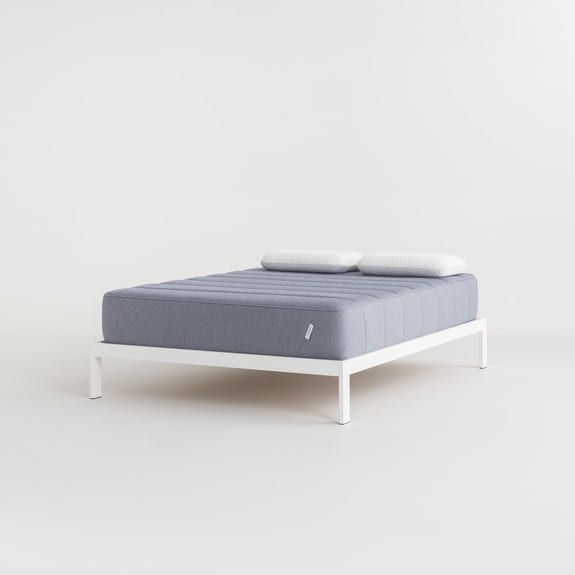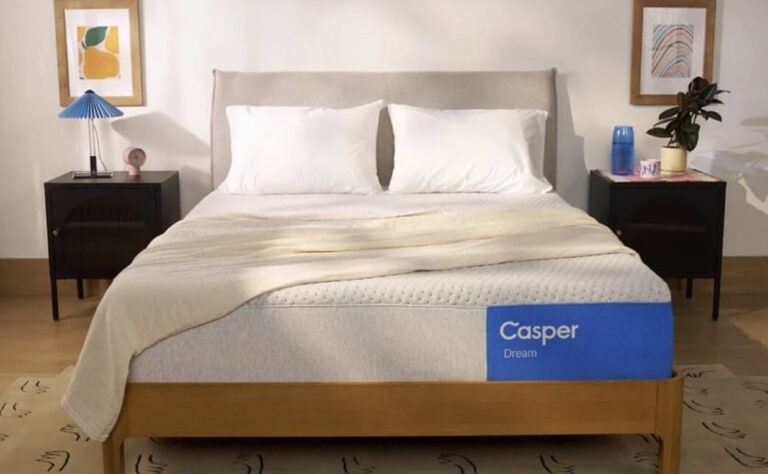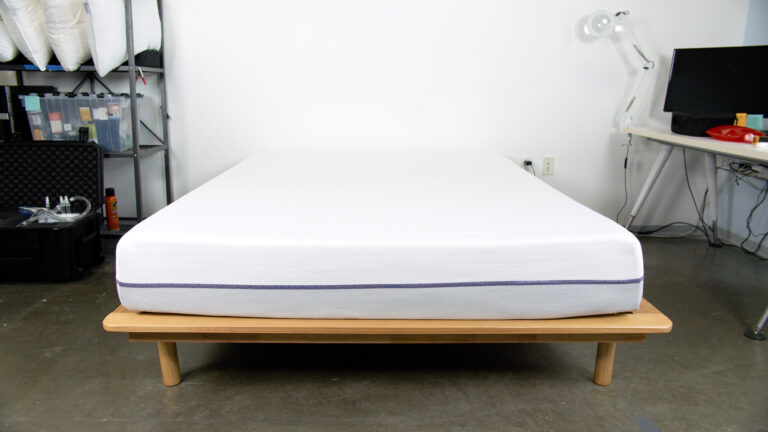When you buy through our links, we may earn a commission. Products or services may be offered by an affiliated entity. Learn more.
Nectar vs Tuft & Needle Mattress Comparison
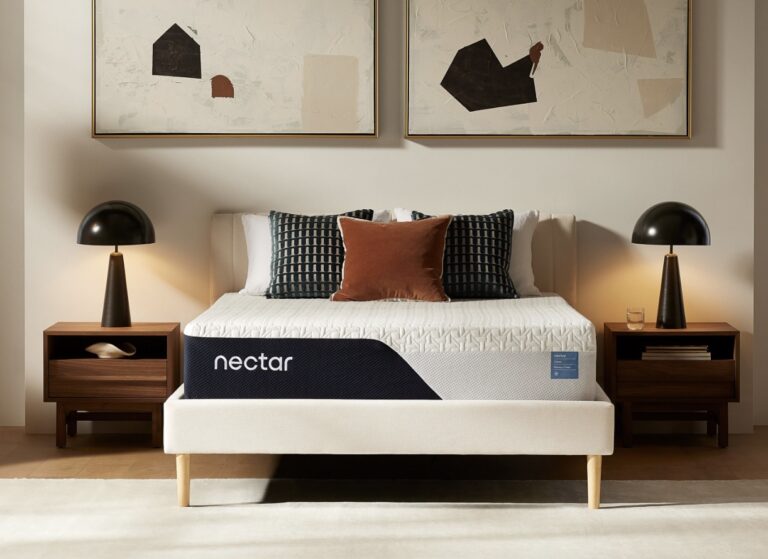
Nectar Classic
Bottom Line
The Nectar uses memory foam for a cushy, hugging feel that easily absorbs motion from the other side of the bed.
Save 50% on mattresses & 66% on bundles
Full Mattress ReviewVS
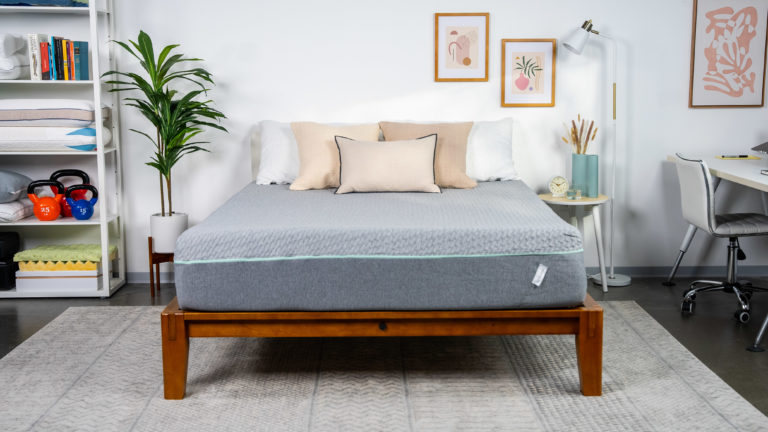
Tuft & Needle Original
Bottom Line
The Tuft & Needle Original uses multiple cooling technologies in its foams for a bouncier feel that takes the pressure off.
15% off mattresses
Full Mattress ReviewNectar and Tuft & Needle are two of the country’s leading mattress-in-a-box brands. Both offer comparable models in terms of construction, materials, and firmness levels, but there is plenty to distinguish between the two.
Nectar launched in 2017 with its flagship all-foam, medium firm Nectar Mattress (now called the Classic). The company has eight different foam and hybrid mattress models, and they also sell bed frames, bedding, and bundles.
Tuft & Needle has been around since 2012. The company’s first bed, known as the T&N Original Mattress, is a medium firm all-foam model. Tuft & Needle offers both the Original and its Mint Mattress in hybrid and foam versions.
If you’ve narrowed down your search to either Tuft & Needle or Nectar, the break down below can help you choose which bed is right for you. This comparison focuses on both brands’ flagship beds but also provides insight into other models in their lines.
Quick Look
$649
$761
Medium Firm (6)
Medium (5)
- Adaptive memory foam hugs the body to alleviate pressure
- Excellent motion isolation and no noise
- Premium polyfoam contours while feeling somewhat responsive
- Open-cell material sleeps fairly cool
- 365 nights (30-night requirement)
- Lifetime, Limited
- 100 nights
- 10 year, limited
- A+
- A+
Our Testing Team’s Take
At Sleep Foundation, we’ve personally tested nearly 2,000 mattresses in our Seattle-based Test Lab. Since a bed’s comfort and feel largely depends on your body weight and sleeping position, our team represents a wide range of body types, sleep positions, and comfort preferences. We evaluate each mattress equally across a number of performance categories. Specifically, we look at construction and materials as they relate to value, conduct quantitative testing in our lab, field testing in our homes, and perhaps most importantly, solicit feedback from owners to see how the beds sleep in the real world. Here’s how both brands stack up.
Our Verdict
The flagship models are comparable, price-wise, with Nectar being a bit cheaper. At 12 inches thick, the Nectar has a 2-inch transitional foam layer that the T&N does not, which may result in some sinkage for heavier individuals. As you go up the line, Nectar generally stays 1-2 inches above the T&N models. Nectar offers a 365-day sleep trial, where T&N is only 100, and both brands offer generous warranties.

Tom Ryan, PhD
Head of Product Testing
side sleeper
210 pounds
hates mornings
I enjoyed the Nectar. I felt well supported and my shoulders and hips were nicely cushioned as I laid on my side. There was a really nice coziness to it. On the other hand, I did sleep hotter than in my usual bed. I was kicking the covers off throughout the night.
Both flagship beds are medium firm. The Nectar conforms closely to form a deep, pressure-relieving cradle around your body, where the T&N also allows some sinkage given its lack of a transitional layer (which also contributes to a weaker perimeter). The polyfoam in the T&N is open cell and infused with graphite and cooling gel, so it doesn’t retain quite as much heat as the Nectar. (Cooling tech isn’t incorporated into the Nectar line until the Premier model and above.) Both brands excel at pressure relief; Nectar stands out in motion isolation, where the T&N stands out in ease of movement.

Mary Fenton
Head of Product Content
combo sleeper
150 pounds
sleeps with white noise
I slept on the T&N Original for just over a month and I really liked it. I typically prefer my beds to be on the firmer side, but this felt like a true medium firm, not softer like many that claim to be medium firm. I also didn’t get hot on the T&N, which I was surprised by because I do tend to sleep warm on all-foam beds.
Construction and Materials
Here’s a breakdown of the material composition across the two brands’ flagship models.
| Construction Analysis | Nectar Mattress | Tuft & Needle Original |
|---|---|---|
| Cover | Polyester, polyethylene, nylon | Polyamide and polyester with an antimicrobial protectant |
| Comfort Layer | 2″ memory foam | 3″ polyfoam |
| Transitional Layer | 3″ polyfoam | None |
| Support Core | 7″ HD polyfoam | 7″ HD polyfoam |
Nectar Models Breakdown
All three Nectar beds have a medium firm feel, and most sleepers will find they feel quite similar to one another, but the phase-change material in the Premier and Luxe allow it to sleep noticeably cooler. The fabric blend in the cover creates an exceptionally soft material that is also quite breathable.

The comfort layers in the Nectar Mattress conform very closely to form a deep, pressure-relieving cradle around your body. Many liken this sensation to sleeping “in” the mattress. While you’ll probably sink deep beneath the surface, the transitional and base layers will keep you on an even plane and prevent excessive sagging.
With the Premier, you get 3 inches of gel-infused memory foam with phase-change material to dissipate heat and help the mattress stay cool, plus a transitional layer that is 3 inches thick, and a base layer that is 7 inches thick. With Nectar’s thickest mattress, the 14 inch Luxe, you get 4 inches of memory foam infused with gel and phase-change material. The transitional layer is 1 inch thick, while the support core is 9 inches thick. The cover on the Luxe is infused with cooling copper to promote even more temperature control than the other two Nectar mattresses.
Tuft & Needle Models Breakdown
The 3-inch comfort layer in the Tuft & Needle Original is open-cell polyfoam infused with graphite and cooling gel, both of which help resist heat buildup. The absence of a transitional layer may cause some sleepers to sink too deeply and make the edges prone to deep sagging, as well, which may also make getting on and off the bed somewhat difficult – especially if you weigh more than 230 pounds.

The T&N Mint has the same comfort layer and support core as the Original but also has 2-inch transitional layer infused with cooling components, allowing the Mint Mattress to sleep noticeably cooler than the Original (and other all-foam models from competing brands). Because it has a transitional layer, it provides better support and perimeter reinforcement than the Original.
The T&N Hybrid has the same comfort layer, plus a second comfort layer of minicoils, and a support core featuring pocketed coils. The coils, along with the transitional layer, make the mattress feel exceptionally responsive and also provide much better support to the edges, even compared to other hybrids. The coils also promote steady air circulation to help the mattress maintain a comfortable temperature.
Mattress Sizing
Nectar and Tuft & Needle have a comparable offering in terms of mattress weight and six standard sizes, but Nectar also offers a split king as an additional size. There is some discrepancy in bed height between the lines, with Nectar having the taller profile across the board.
| Nectar Model | Profile | Tuft & Needle Model | Profile |
|---|---|---|---|
| Nectar Mattress | 12″ | Tuft & Needle Original | 10″ (Hybrid 12″) |
| Nectar Premier | 13″ | Tuft & Needle Mint | 12″ |
| Nectar Luxe | 14″ | Tuft & Needle Hybrid | 14″ |
Performance Ratings
Every sleeper has different mattress preferences: Some want a mattress that contours closely to their body to alleviate pressure, while others like the feel of a firmer, more responsive bed. Hot sleepers may prioritize their search for beds that sleep cool, and couples may narrow down their choices based on motion isolation, noise potential, and edge support. Here’s how both brands’ flagship models compared in our testing.
| Category | Nectar Mattress | Tuft & Needle Original |
|---|---|---|
| Motion Isolation | 8.5/10 | 7.5/10 |
| Ease of Movement | 5.5/10 | 5/10 |
| Temperature Regulation | 6/10 | 5.5/10 |
| Pressure Relief | 8.5/10 | 7.5/10 |
| Odor Emissions | 6/10 | 5.5/10 |
| Edge Support | 7/10 | 6.5/10 |
Mattress Pricing
Nectar and Tuft & Needle prices are fairly comparable – which is to say, each brand offers relatively inexpensive mattresses. The flagship Nectar and T&N Original Mattress models, in particular, are very affordable compared to all-foam beds from competing brands. If you have a limited budget, neither of these models will break the bank and both have earned strong ratings across several categories.
If your budget is a little more flexible, you might consider the Nectar Premier, Nectar Luxe, or T&N Hybrid, all of which have relatively expensive price-points. Mattress type is a key distinction here. The Nectar Premier and Luxe are fairly expensive compared to other memory foam beds, but the T&N Hybrid costs less than the average hybrid model.
Sleep Trials, Warranties, and Shipping
| Policy | Nectar | Tuft & Needle |
|---|---|---|
| Sleep Trial | 365 nights | 100 nights |
| Warranty | Lifetime, limited | 10-year, limited |
| Shipping | Free to contiguous U.S., arrives within 7 days | Free to contiguous U.S., arrives within 7 days |
| White Glove Delivery | $149 | $150 |
What Customers Are Saying
Both brands have favorable customer reviews for comfort and support. Most owners feel that the Nectar Mattress excels in pressure relief and motion isolation, while the Tuft & Needle Original stands out in temperature regulation and value. Individual preferences regarding firmness, edge support, and sleeping position ultimately influence the best choice for each individual.

Still have questions? Ask our community!
Join our Sleep Care Community — a trusted hub of product specialists, sleep health professionals, and people just like you. Whether you’re searching for the perfect mattress or need expert sleep advice, we’ve got you covered. Get personalized guidance from the experts who know sleep best.

